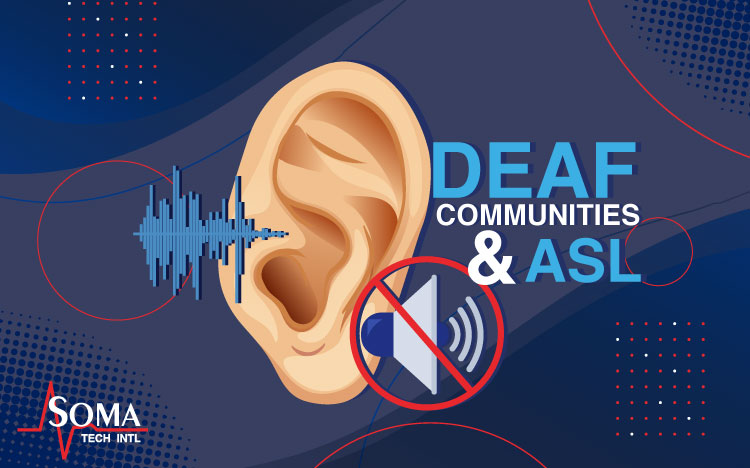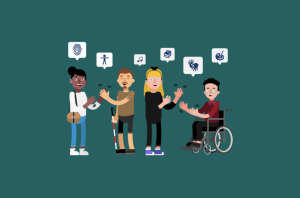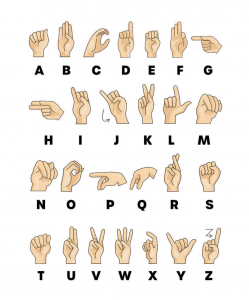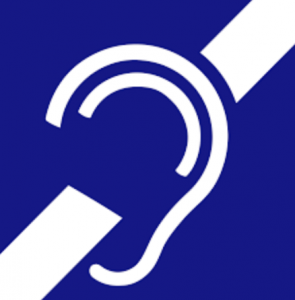Deaf Communities and ASL
May 3, 2023
- Deaf Awareness Week
- American Sign Language
- Problems Facing the Deaf Community
- Ways to Support Deaf Peers and Communities
Deaf Awareness Week
Deaf Awareness Week is an annual event observed in many countries around the world and this year focuses on deaf inclusion. The purpose of the week is to raise awareness and promote understanding of deafness, hearing loss, and related issues, as well as to celebrate the culture, language, and achievements of the deaf community.
During Deaf Awareness Week, a variety of events and activities may take place, such as sign language classes, workshops, performances, and information sessions. These events may be organized by local deaf organizations, schools, or community groups, and are designed to educate people about the challenges faced by the deaf community, as well as the contributions they make to society.
Deaf Awareness Week is an important opportunity to promote inclusivity and accessibility for people who are deaf or hard of hearing and to foster greater understanding and respect for their unique experiences and perspectives.
American Sign Language
ASL stands for American Sign Language and is a visual-gestural language used by many deaf and hard-of-hearing individuals in the United States and Canada, as well as parts of Mexico and some other countries.
ASL is a complete, natural language with its grammar, syntax, and vocabulary. It is not simply a visual representation of English or any other spoken language, but a distinct language with its unique features and rules. ASL incorporates a range of facial expressions, body movements, and hand shapes to convey meaning, and can be used to express complex ideas and emotions.
Like spoken languages, ASL has regional variations and dialects, which can differ in vocabulary and grammar. It is also a dynamic language that evolves, with new signs being added and old signs being modified or replaced as necessary.
ASL is an important part of deaf culture and is used in a variety of settings, including schools, homes, and social gatherings. It is also recognized as an official language in some countries and is increasingly being taught as a second language in schools and universities. ASL is an important means of communication and expression for many deaf and hard-of-hearing individuals and is a rich and complex language in its own right.
Problems Facing the Deaf Community
The deaf community faces a number of challenges and issues, including:
- Communication barriers: The inability to hear and/or speak creates significant barriers to communication for the deaf community, which can make it difficult for them to access education, healthcare, employment, and social activities.
- Limited access to information: Many sources of information, such as TV programs, public announcements, and emergency alerts, are not fully accessible to deaf people. This can make it difficult for them to stay informed and fully participate in society.
- Discrimination: Deaf people may face discrimination and prejudice due to their disability, such as being denied employment or educational opportunities, or being treated unfairly in social situations.
- Mental health challenges: Deaf individuals may be at greater risk for mental health issues such as depression and anxiety, due to social isolation and lack of access to mental health services.
- Accessibility barriers: Many public spaces and services are not designed to be fully accessible to deaf people, such as the lack of captions in movies or public transportation systems that do not have visual announcements.
- Language barriers: The deaf community often uses sign language as their primary means of communication, which can create barriers when interacting with people who do not know sign language.
- Financial barriers: Access to assistive technology and other accommodations can be expensive, making it difficult for some deaf individuals to access the resources they need.
Overall, the deaf community faces a range of challenges that require increased awareness, understanding, and support to address.
Ways to Support Deaf Peers and Communities
If you have deaf peers, there are several ways you can support them and promote inclusion and accessibility:
- Learn sign language: Learning some basic sign language can be a great way to communicate with deaf peers and make them feel more included. You can take classes or use online resources to get started.
- Be patient and accommodating: Communicating with deaf peers may take longer than with hearing individuals, so it’s important to be patient and allow them the time they need to communicate effectively. Be willing to use alternative forms of communication, such as writing or using assistive technology if necessary.
- Use visual cues: When speaking with deaf peers, try to use visual cues such as facial expressions and gestures to help convey meaning.
- Advocate for accessibility: Speak up and advocate for accessibility in your school, workplace, or community. This may include advocating for closed captioning on videos, and public announcements, or promoting the use of assistive technology.
- Be respectful: Respect your deaf peers’ communication preferences and be open to learning about their culture and experiences.
- Include them in social activities: Invite your deaf peers to participate in social activities that are accessible and inclusive.
Supporting deaf peers requires a willingness to learn, be patient, and be an advocate for accessibility and inclusion. There are also resources available to help support the deaf community, and promoting accessibility and inclusion is an important step in creating a more equitable society.

Explore Other Blog Items By Category
Recent Posts


Surgical Microscope Rentals




